Technology goes on, and we at Cyberlayman are always at the forefront to offer you the latest news on the market. However, it happens from time to time that you need to tap into prehistoric technology, for which a small accessory like the Inateck USB 3.0 to IDE + SATA makes a difference.
One step back
All current mechanical disks and even many solid state drives today are characterized by a connector called Serial ATA (short for Serial Advanced Technology Attachment, which can be translated into Serial Advanced Connection Technology), a connector born in the first decade of the 2000s which substantially repeated the success of the previous IDE connector.
The SATA connection for the internal disks is its two hooks that are always together, one Serial ATA with 15 contacts for the disk power supply and a second with 7 contacts for data. The connector is the same for 3.5 “drives as for 2.5” drives, as for SSDs, always 2.5 “.
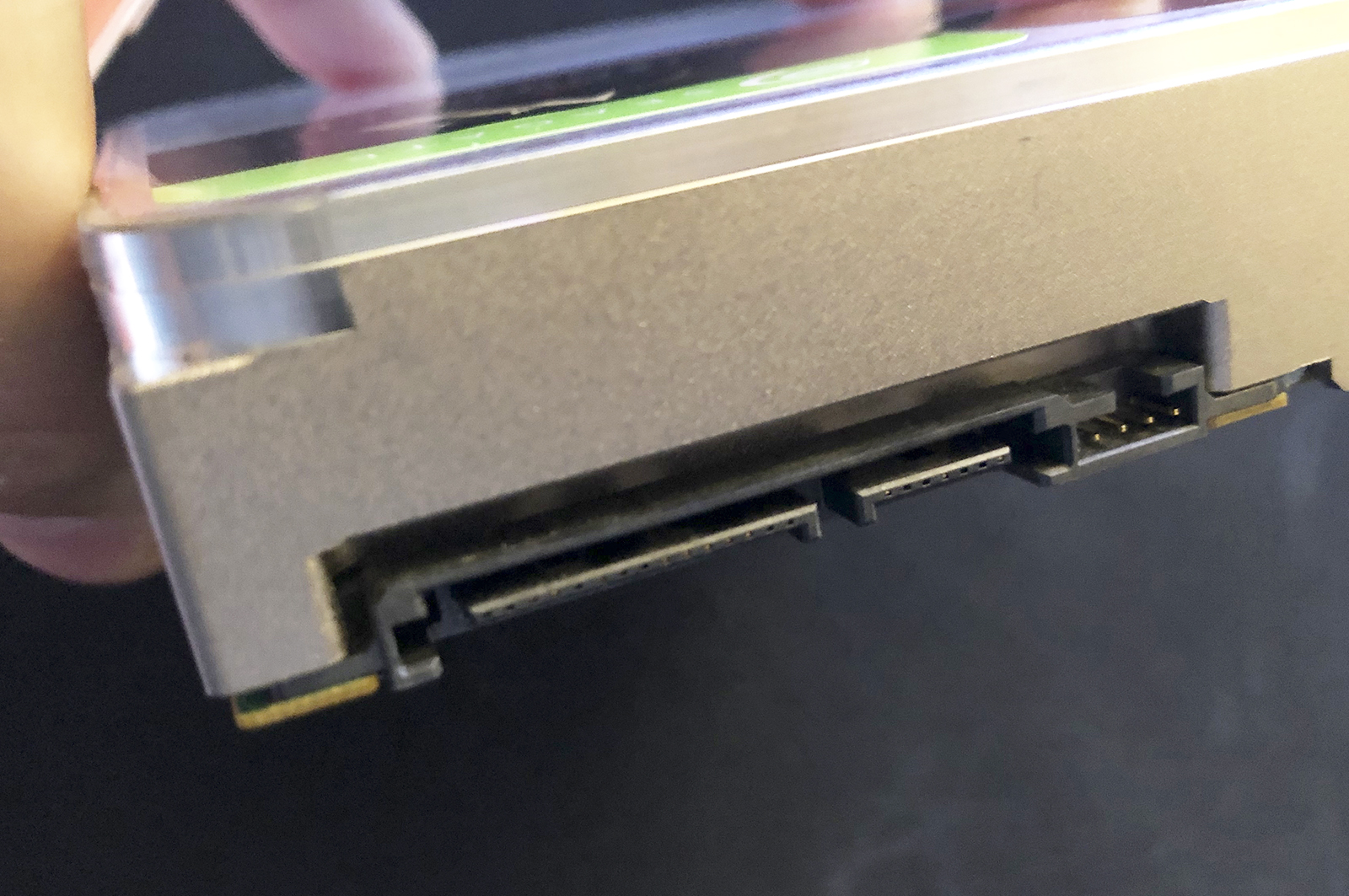 One SATA connector, with power (right) and data pass (left), here on a 12TB Seagate IronWolf Pro drive
One SATA connector, with power (right) and data pass (left), here on a 12TB Seagate IronWolf Pro drive
The luck of this connector is set to remain steadfast for years, because while faster SSDs are now geared towards far more capable connectors like M.2, the SATA standard will remain for all mechanical drives for some time, why change standard would have no effect on peak speed.
This article, however, arises from the need to use not this connector, but the previous one, called by many names but identified by most as IDE (Integrated Drive Electronics) or PATA (from Parallel ATA).
In this standard the connector featured an 80 PIN socket much larger than the current one and was used for internal optical discs and players from the mid-nineties to the end of the first decade of 2000.
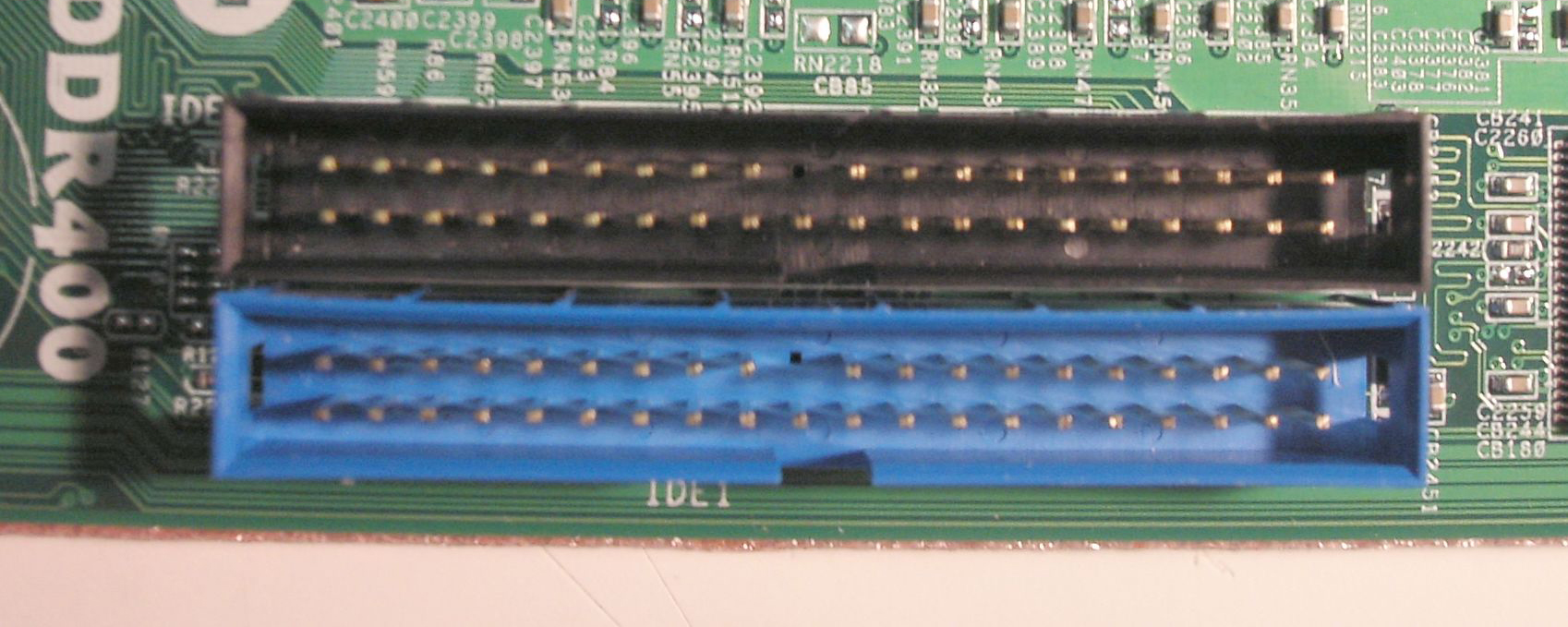 The old IDE connector (source Wikipedia), no longer used since 2008-2009. Old discs with this connector are very difficult to read today
The old IDE connector (source Wikipedia), no longer used since 2008-2009. Old discs with this connector are very difficult to read today
Time travel
This is precisely the standard present in a couple of discs for which we had the need to extrapolate the data, after noting that in the relative original cases the power supply no longer gave any sign of life. A little game of screwdrivers and removed several strips of tape from inside, we freed the discs, to find that none of the connectors we had in the drawer were compatible.
The solution was to look for something on Amazon and after a careful search, we opted for this Inateck USB 3.0 to IDE + SATA, capable of making our MacBook Pro communicate with a disk that has an old standard of well over 12-13 years. The HUB arrived in a day and we immediately started working on it.
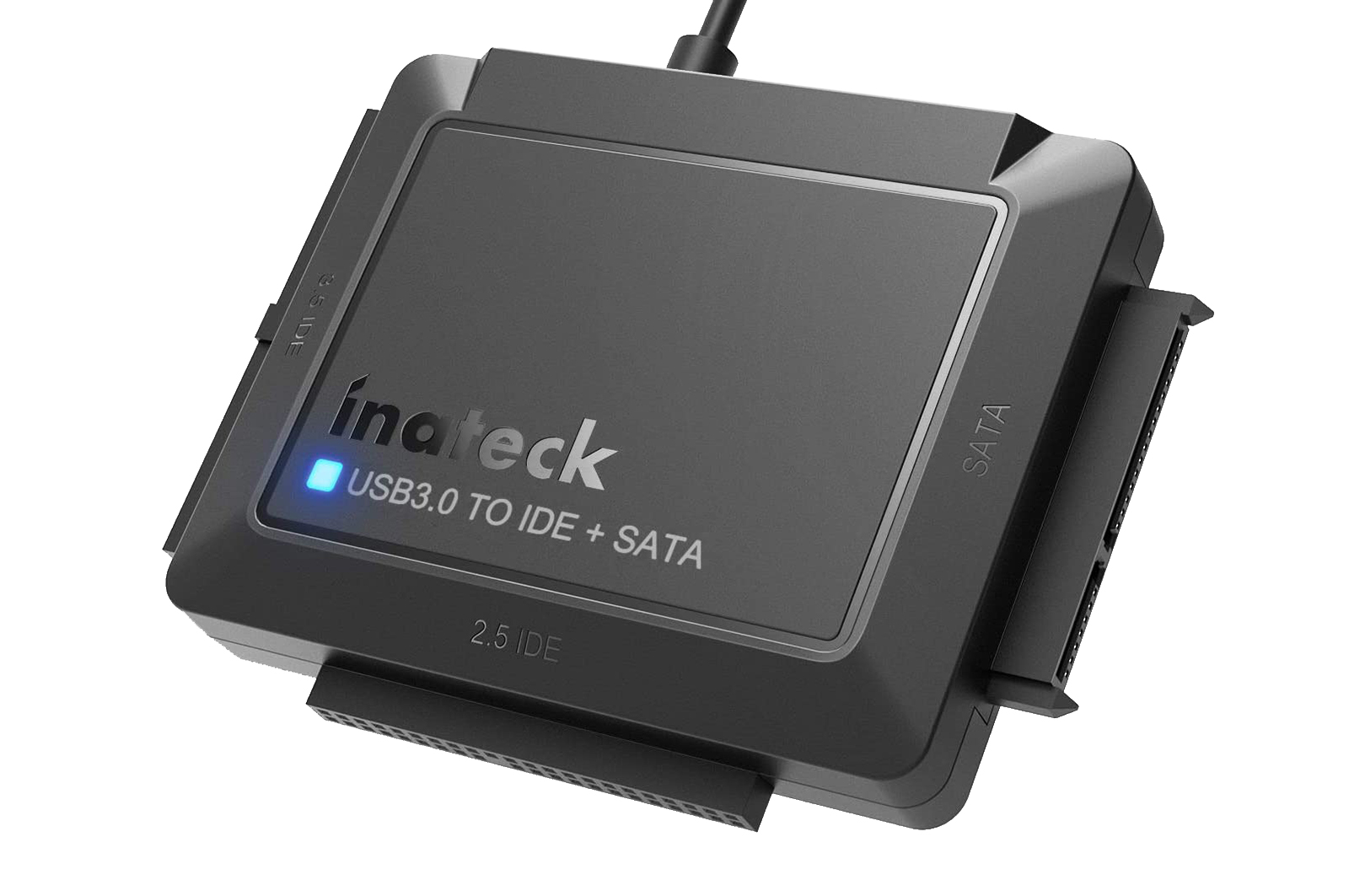 The Inateck USB 3.0 to IDE + SATA shows, on the three sides, the different connectors, SerialATA, IDE for 3.5 “disks and IDE for 2.5” disks ″
The Inateck USB 3.0 to IDE + SATA shows, on the three sides, the different connectors, SerialATA, IDE for 3.5 “disks and IDE for 2.5” disks ″
One for all, all for one
The Inateck USB 3.0 to IDE + SATA arrived in an anonymous cardboard box with the effigy in white (but we were a little used with some devices of the same brand already reviewed, such as the Inateck Docking Station or the Inateck 9-in-1 USB C Hub), where inside there was the actual HUB, the power supply (external), a small manual and the 4 PIN cable for powering the IDE disks.
The unit has a single USB-A 3.0 cable, which to be connected to a MacBook Pro must use a connector, we have alternated a very powerful solution like the Caldigit SOHO Dock to a simpler one like the VAVA Hub 8 in 1 USB- C. Or you can opt for a much simpler solution like this one.
Once the HUB is powered, just understand what kind of disk you want to connect to the computer (being a hardware accessory, it works with macOS or Windows in the same way): in the case of a SATA disk, just connect the disk to the HUB, while for 2.5 ″ or 3.5 ″ IDA disks you need the help of the 4 PIN power cable.
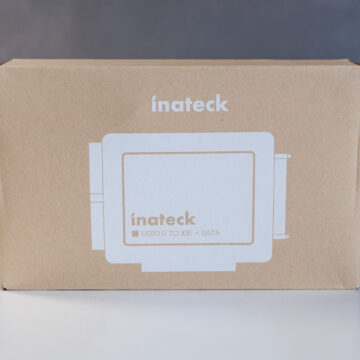
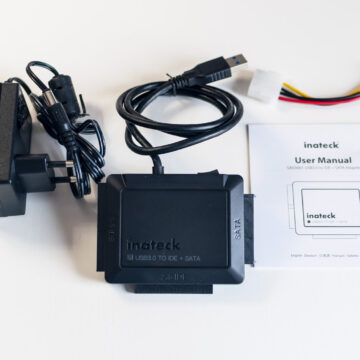
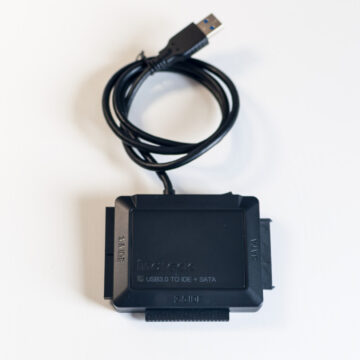
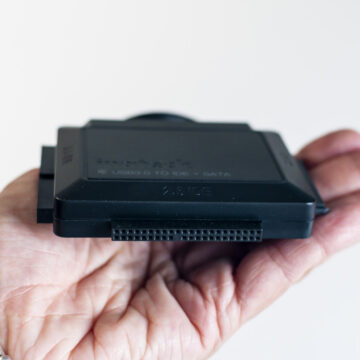
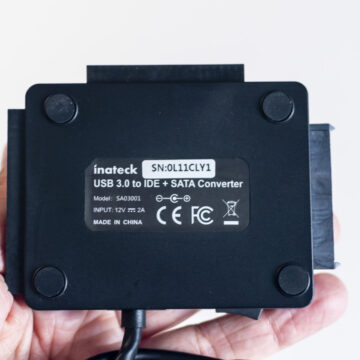
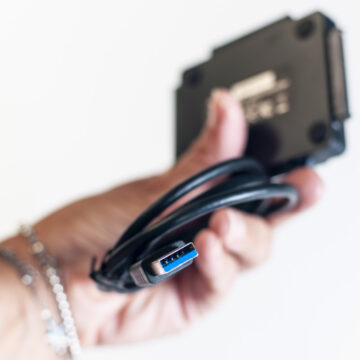
How does it work
For operation with macOS and Windows 10 (where we tested it) no drivers are needed, if the disks are in good condition they are seen as external USB drives without problems.
The unit works well, the connector is light and apart from the noticeable increase in cables on the desk, but it is still an accessory that is used from time to time, it is certainly not designed to be used in productivity, it does not produce heat or noise .
However, the solution is cheap and you can see it in some details on which we hope in the future Inateck will work better: the ignition button is badly welded and moves too much, so you need a little attention when you press it and the connector of the 4 PIN cable for IDE disks is too close to the power cable, a coexistence absolutely possible, but a little inconvenient.
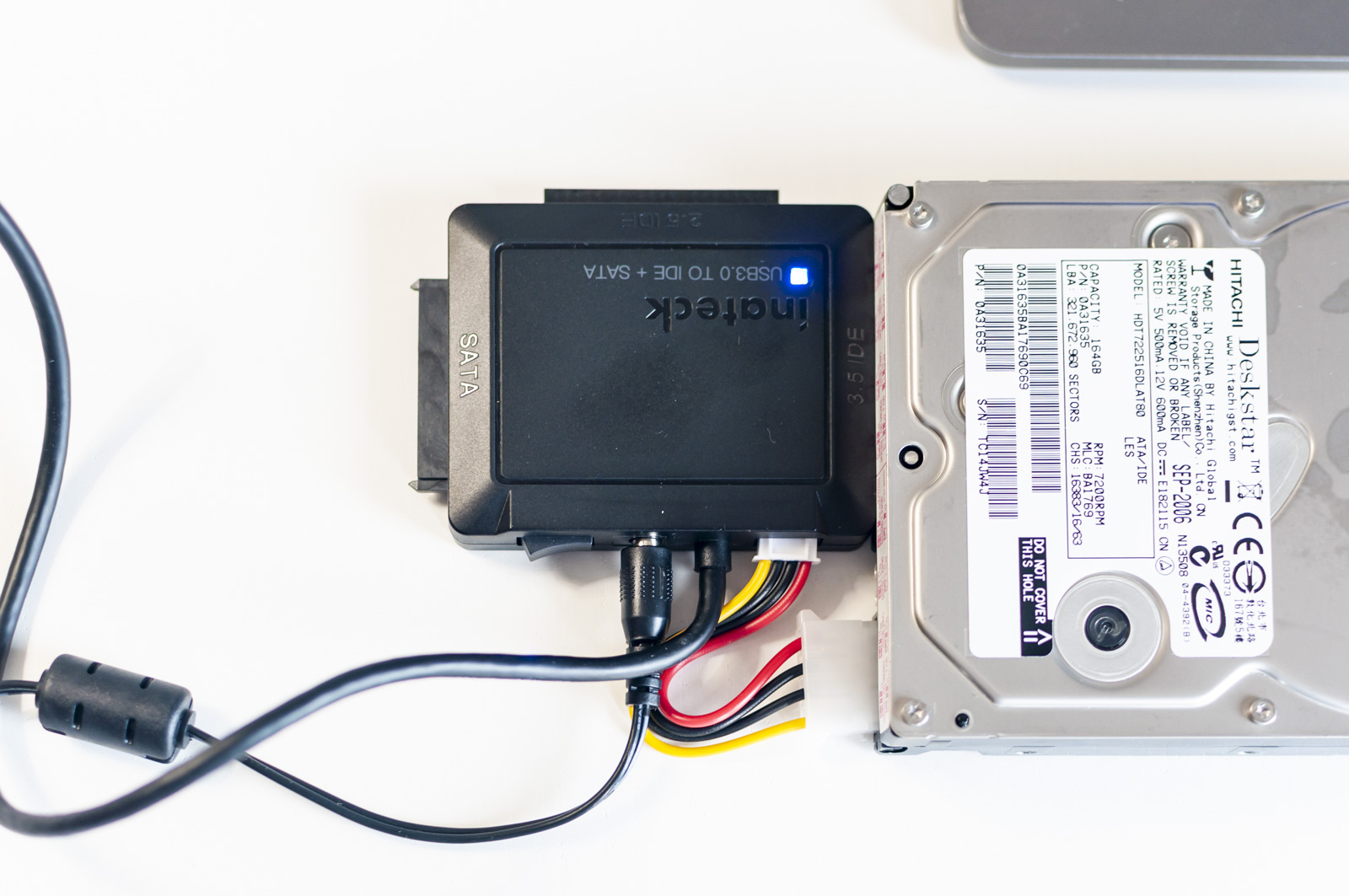 The Inateck USB 3.0 to IDE + SATA is working, with an outdated IDE drive. Too bad that the power cable (the red, yellow and black one) of the disk is not so easy due to the proximity to the HUB power supply and the disk connector
The Inateck USB 3.0 to IDE + SATA is working, with an outdated IDE drive. Too bad that the power cable (the red, yellow and black one) of the disk is not so easy due to the proximity to the HUB power supply and the disk connector
Otherwise the device works, a small blue LED lights up when switched on and pulses when there is a data transfer.
We advise a little attention in the use of “bare” disks, in the sense that the surface on which they rest should be as smooth and non-metallic as possible, since the motherboard of the disks is exposed, especially for IDE disks that at this point they will be 15 to 20 years old each and can prove extremely fragile.
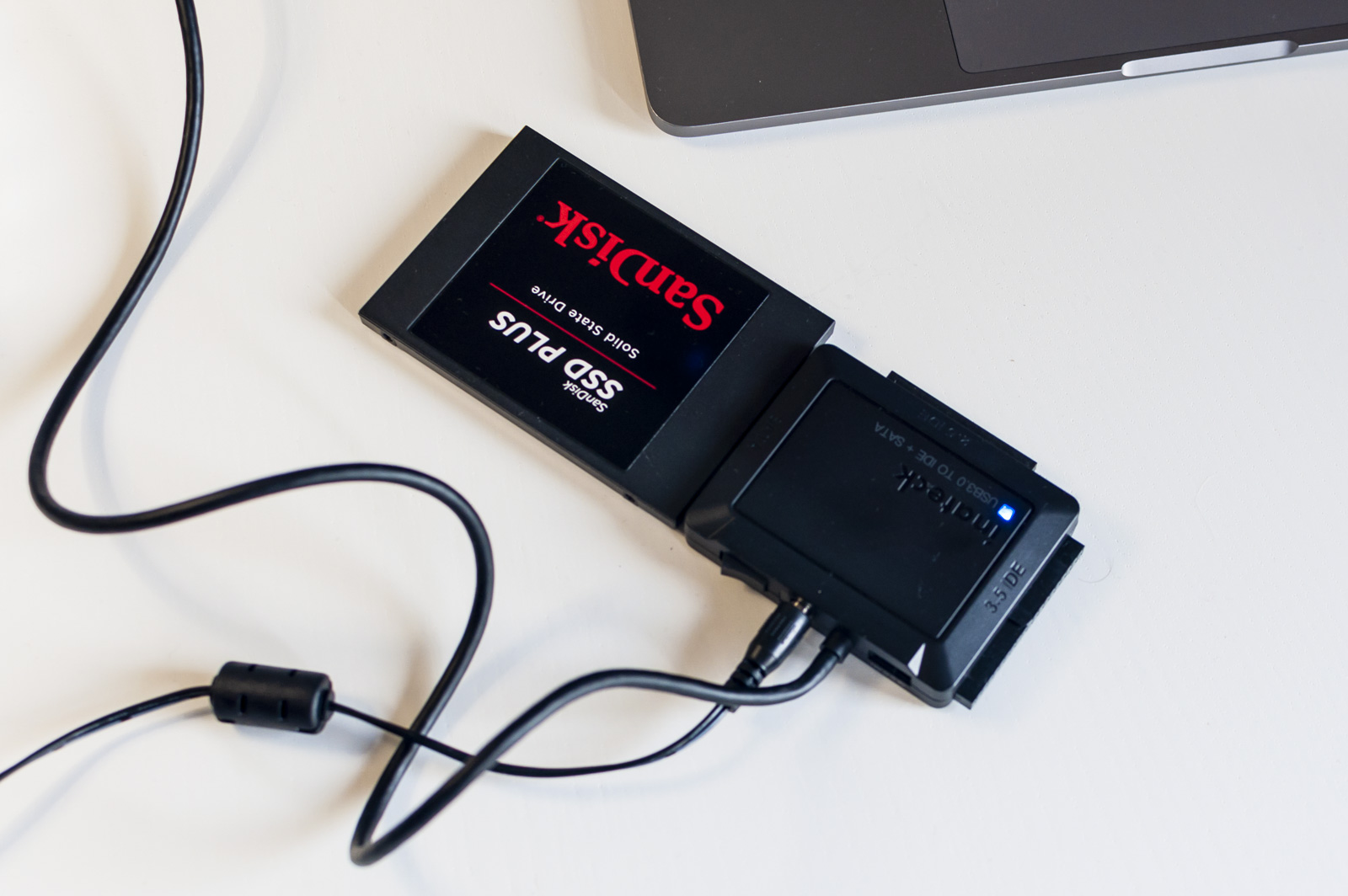 With SATA drives, here for example a SanDisk Plus SSD, everything is easier because the SATA connector is more modern and integrates the power supply next to the actual connector
With SATA drives, here for example a SanDisk Plus SSD, everything is easier because the SATA connector is more modern and integrates the power supply next to the actual connector
Considerations
Since an accessory like the Inateck USB 3.0 to IDE + SATA is not something you use every day, considerations regarding its usefulness vary greatly from situation to situation. If you often work with “bare” disks, perhaps for the management of NAS drives or for data recovery from some internal disk of a MacBook Pro, then probably Devices like the Inateck Docking Station are more for you.
But if you happen to have a more vintage disk than usual, then the usefulness of an accessory like the Inateck USB 3.0 to IDE + SATA is absolute, even and only for reading IDE disks.
A rather risky operation, because the disks are old and many do not work (of the two on which we operated, only one was manageable, the other made a rather disturbing noise) but often the recovery of photos, videos and documents stored in old records can have incredible economic or emotional value.
Also and only for this reason, the 26.99 Euros to which this HUB is proposed are very few, even if we use it only once.
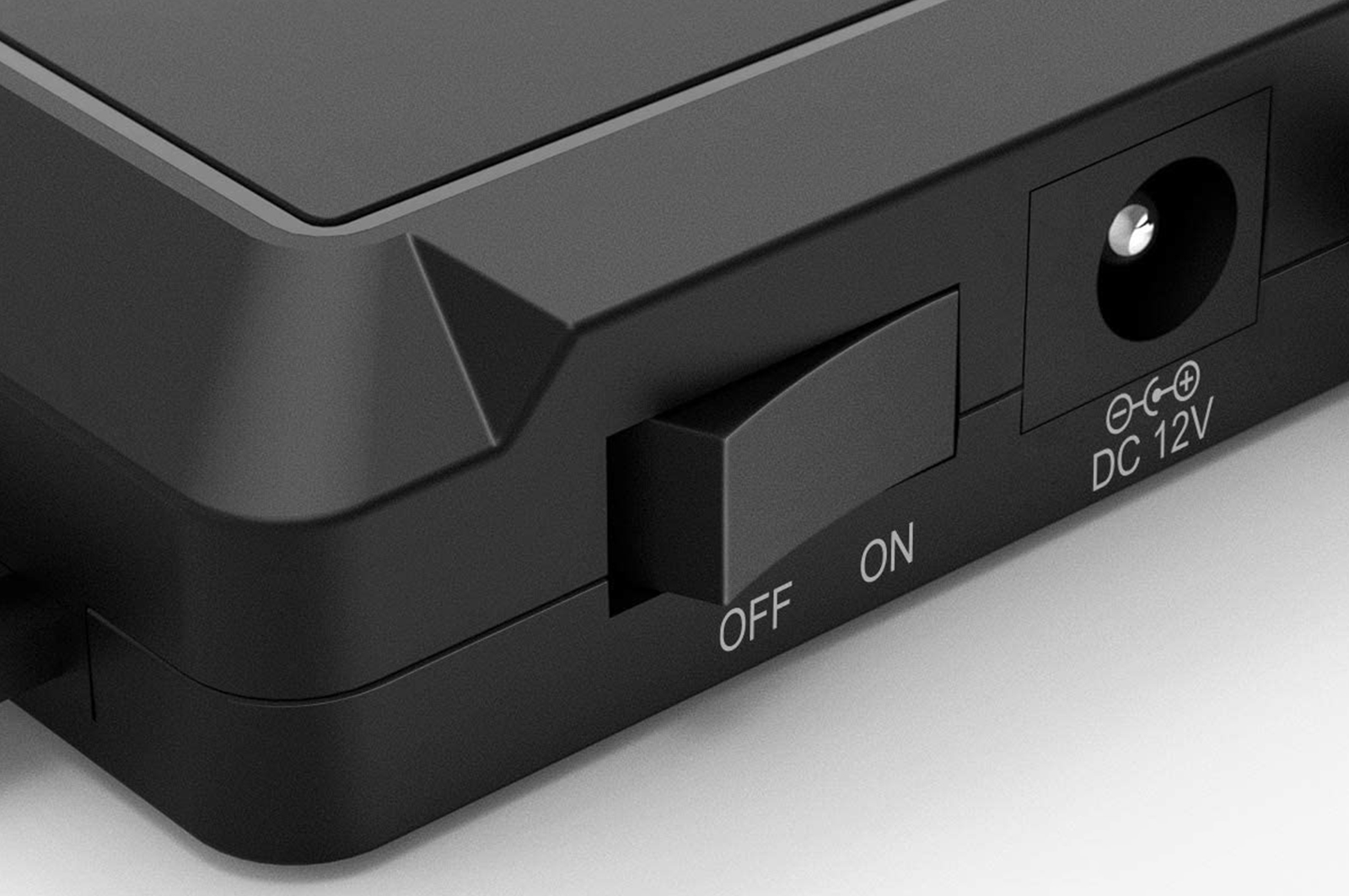 A detail of the power button.
A detail of the power button.
Pros:
• Small and not bulky • Simple to use
Cons:
• The construction can be improved
Price:
• 26.99 Euro
Inateck USB 3.0 to IDE + SATA exclusively from Amazon.it pages, as a Prime product.






joe
November 15, 2021 at 4:57 pm
DOES IT ACTUALLY WORK
Charith Weerasinghe
November 22, 2021 at 2:52 pm
Of course, it does!